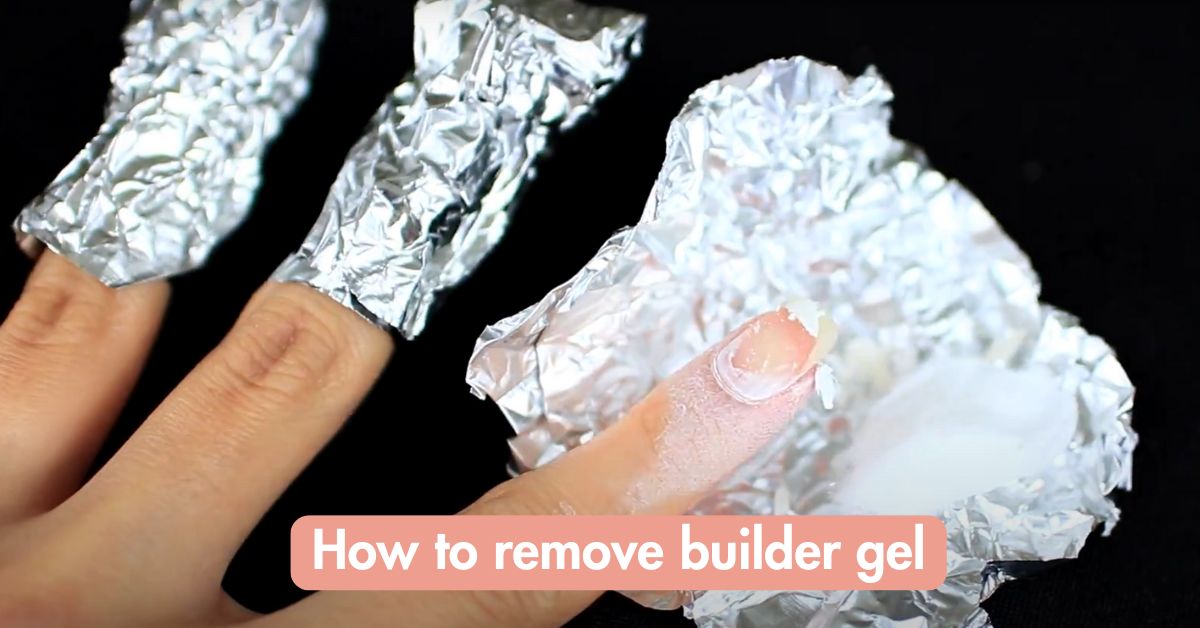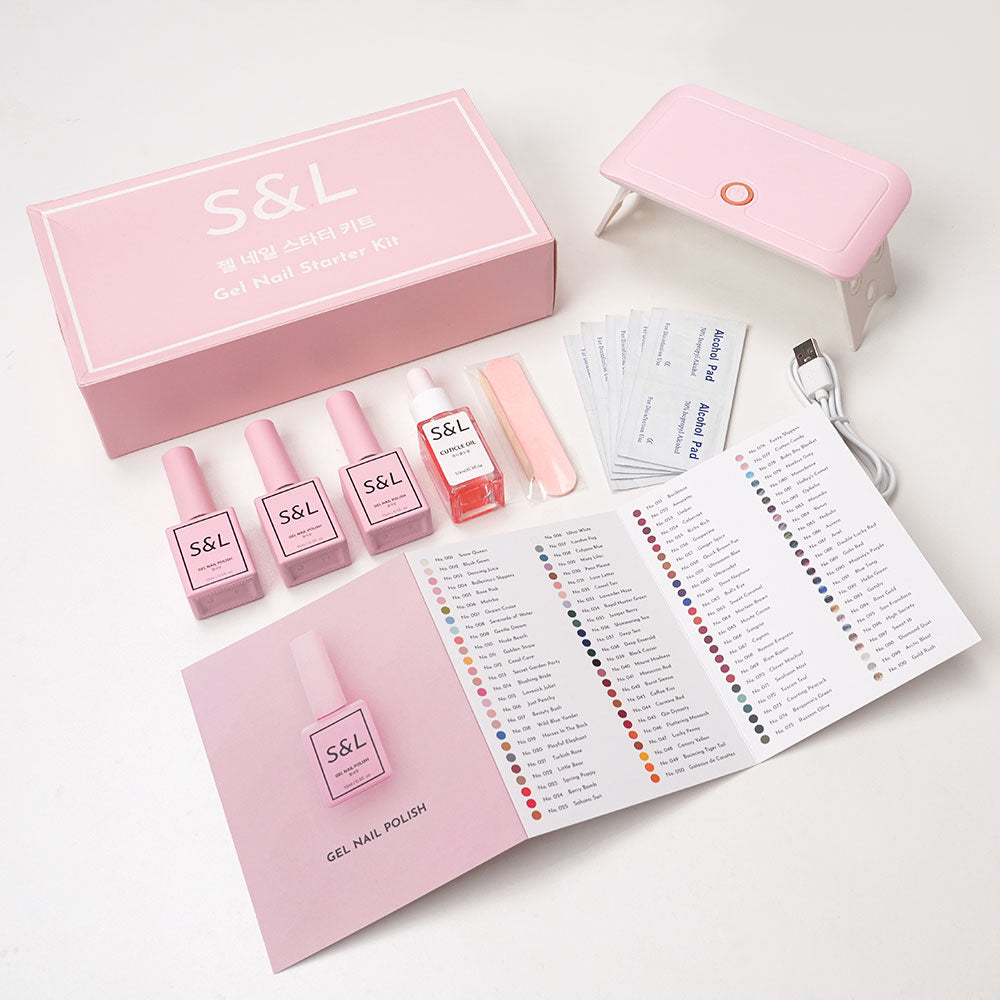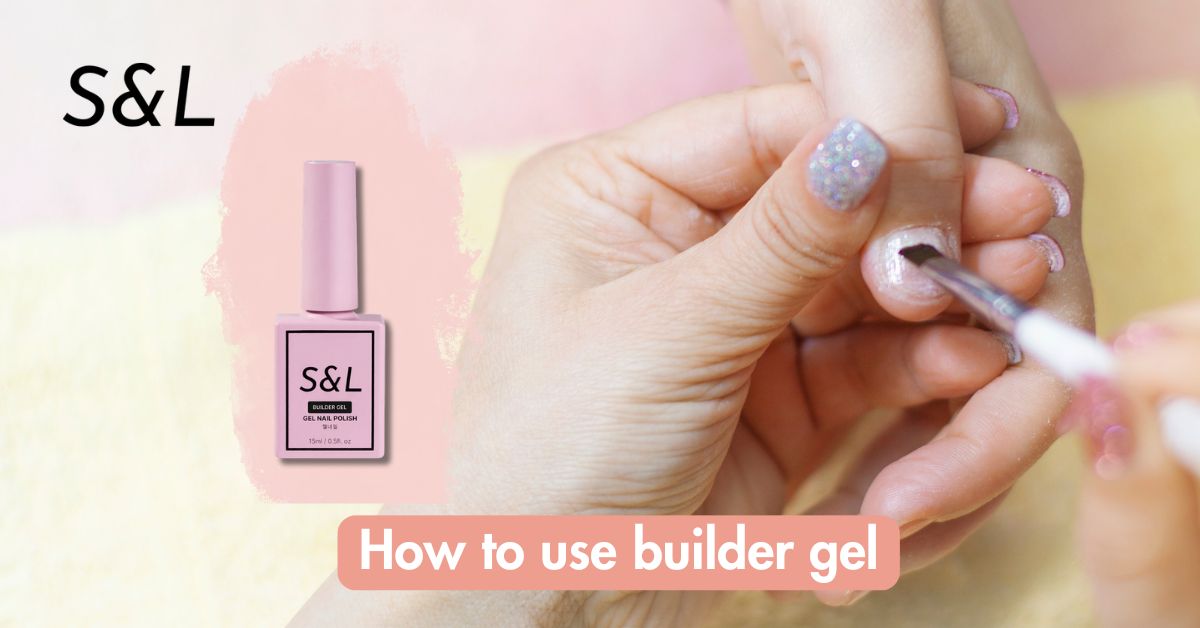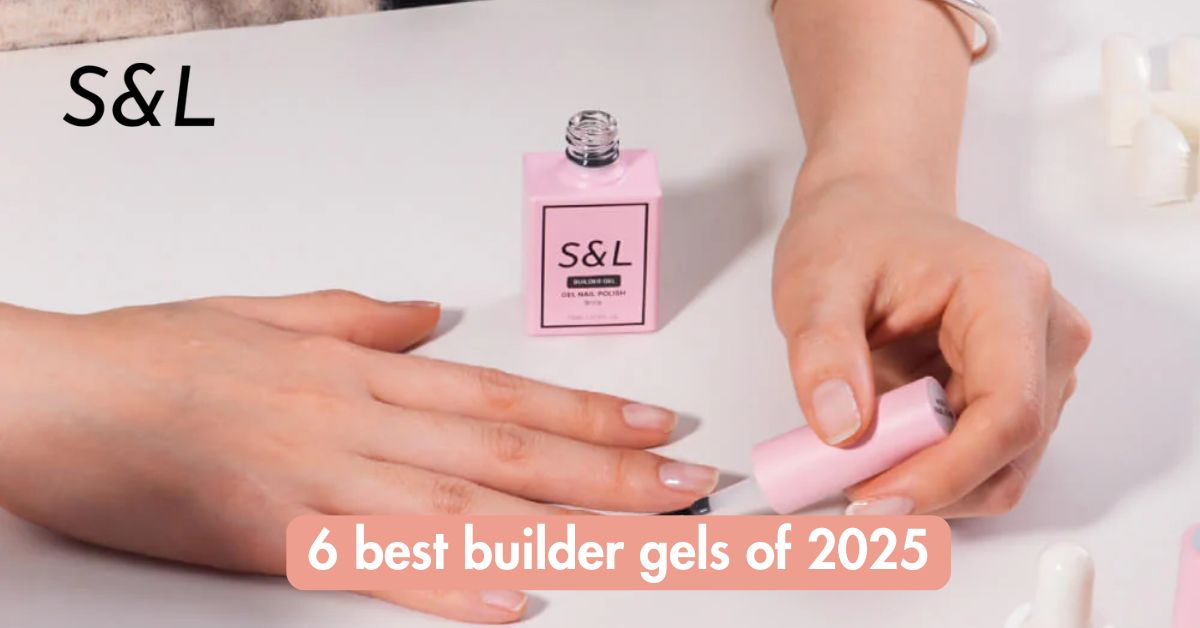
How to remove builder gel: Step-by-step guide and helpful tips
Builder gel helps create strong, long-lasting nails, but at some point, you may need to remove it—especially if it starts lifting or you want a fresh look. Knowing the proper technique is essential to protect your natural nails. In this guide, S&L Beauty will walk you through a simple, safe removal process you can easily do at home.
When should you remove builder gel?
There are a few clear signs that it's time to take off your builder gel manicure:
- Lifting or separation: The gel may lift from the natural nail due to natural growth, improper application, or wear over time (usually after 2–4 weeks).
- Style change: If you're ready for a new nail color, design, or just want to let your natural nails breathe, removing the old builder gel is the first step.
- Pain or sensitivity: Any discomfort around the nails is a sign you should remove the gel and check your natural nail health.

6 steps to remove builder gel safely at home
Removing builder gel takes patience and gentle care. Follow these six simple steps:
Step 1: Gather your tools and supplies
Before starting, prepare the following items for a smooth removal process:
- Coarse nail file (100–180 grit)
- Nail dust brush
- Pure acetone
- Cotton balls
- Aluminum foil
- Orangewood stick or rubber/plastic-tipped cuticle pusher
- Soft nail file (180–240 grit)
- Nail cleanser or rubbing alcohol
- Cuticle oil
- Hand cream or lotion
- Having everything within reach keeps the process hassle-free.

Step 2: File the top layer
Use the coarse nail file to gently file the shiny top layer of the builder gel. This breaks the seal and allows the acetone to penetrate more easily.
Be careful not to file too deep—avoid touching the natural nail. Use a brush to remove dust as you go so you can monitor your progress.

Step 3: Soak with acetone or use cotton & foil
There are two common methods:
- Acetone soak: Pour acetone into a glass or ceramic bowl (not plastic) and soak your fingertips for 15–20 minutes. This method is fast but may dry out surrounding skin.
- Cotton & foil wrap: Soak cotton balls in acetone, place on each nail, then wrap with foil. Let sit for 15–20 minutes. This method helps retain heat and soften the gel more effectively.

Step 4: Gently push off the softened gel
Once softened, use a cuticle pusher or orangewood stick to gently push the gel from the cuticle toward the tip.
Don't force it—if the gel resists, rewrap and soak for a few more minutes, then try again.

Step 5: File and clean the nail surface
After most of the gel is off, gently buff away any leftover residue with a soft nail file.
If you’re skilled with an e-file, use a suitable bit to remove remaining gel—just be careful not to over-file. Clean nails with rubbing alcohol or a nail cleanser to remove dust and prep for care.
Step 6: Moisturize your nails and skin
Acetone is drying, so it’s important to rehydrate your nails and hands. Massage cuticle oil into the nail and surrounding skin, then apply hand cream for extra moisture.
This step restores flexibility and helps prevent brittle or cracked nails.

Tips and precautions for removing builder gel
Removing builder gel at home can be simple, but it’s important to follow the correct technique. In addition, you should keep the following key points in mind:
- Be patient: Don’t rush. Forcing gel off can damage the natural nail.
- Work in a ventilated area: Acetone has a strong smell—crack a window if needed.
- Protect your skin: Apply Vaseline or cuticle oil around your nails before soaking to minimize dryness.
- Listen to your nails: Stop if you feel pain or irritation, and seek professional help if unsure.
- Avoid metal tools: Use plastic or wooden pushers to protect the nail plate.
- Let your nails rest: After several applications, give your natural nails a break for a week or two and focus on nail care.
Builder Gel Removal FAQs
Which nail drill bit is best for removing builder gel?
Use a carbide bit designed for acrylic and gel removal. Barrel or cone shapes work best, and for the cuticle area, opt for a smaller, fine-grit bit. Always use light pressure and start at a low speed to prevent damage.
What if I don’t apply cuticle oil after removal?
Skipping cuticle oil can lead to dry, brittle nails and peeling cuticles. Acetone strips natural oils, so restoring moisture with cuticle oil is essential. Regular use keeps nails flexible and healthy-looking.
How long should I wait before reapplying builder gel?
While you can reapply builder gel right away, it’s best to wait a few days to a week to let your nails rehydrate and recover. Use this time to apply cuticle oil and strengthen your nails before your next manicure.
S&L Beauty hopes this article has helped you gain more insight into safely and effectively removing builder gel at home. Explore more fascinating knowledge about gel nail polish on our website!





Leave a comment
This site is protected by hCaptcha and the hCaptcha Privacy Policy and Terms of Service apply.